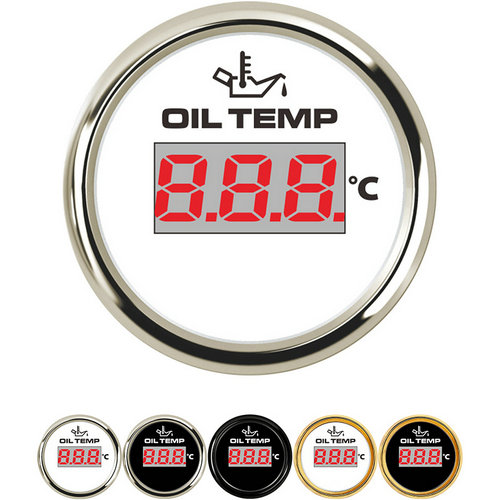oil temp gauge keeps dropping
1.Thermostat failure
The function of the thermostat is to automatically change the flow rate and circulation route of the coolant according to the engine load and water temperature, ensuring that the engine operates at a suitable temperature. When the thermostat is closed, the cooling water does not flow through the radiator, with a short water flow path and low heat dissipation intensity. This is called a small cycle of the water cooling system, where the engine can quickly warm up; When the thermostat is turned on, the cooling water flows through the radiator, with a long water flow path and high heat dissipation intensity. This is called a large cycle of the water cooling system. At this time, the engine temperature rises slowly. If the thermostat fails, remains open or opens prematurely, and the cooling system remains in a large cycle or opens a large cycle early, the engine temperature is unlikely to rise, leading to engine overcooling.
2. Cooling fan fault
The function of the automobile cooling fan is to allow more air to flow through the radiator, enhance the heat dissipation ability of the radiator, and accelerate the cooling speed of the coolant. In passenger cars, cooling fans are generally electric, and the rotational speed can be adjusted, or the two fans can be started in sequence. Generally, the engine control unit controls its start/stop and rotational speed. It does not start when the engine temperature is low, but starts when the engine exceeds normal temperature. The higher the temperature, the faster the rotational speed, or it starts one when the temperature is low, and both start when the temperature is high. If for some reason, such as a temperature controller failure, engine control unit failure, wiring failure, etc., the cooling fan continues to operate after the engine is started, or runs at the highest speed as long as the engine is started, or if both fans are started simultaneously, the engine will overcool, resulting in over cooling.
3. Louver failure
The function of the shutter is to regulate the air flow through the radiator. When it is opened, all the air can flow through the radiator, with a high heat dissipation intensity; When it is turned off, air cannot flow through the radiator and the intensity of heat dissipation is low. Nowadays, cars rarely use blinds to adjust the cooling intensity of the engine, but there are also some models that are being used and becoming increasingly intelligent. For example, the intelligent shutter used on BMW automatically closes when the engine water temperature is low, allowing the engine to quickly warm up; Then, as the engine temperature increases, the opening angle of the shutter gradually increases, allowing more air to flow through the radiator to avoid overheating of the engine. If the shutter is stuck in the maximum open position due to some fault, it can cause the engine temperature to rise too slowly or the water temperature to be too low.
 English
English 



Get a Quote / Info